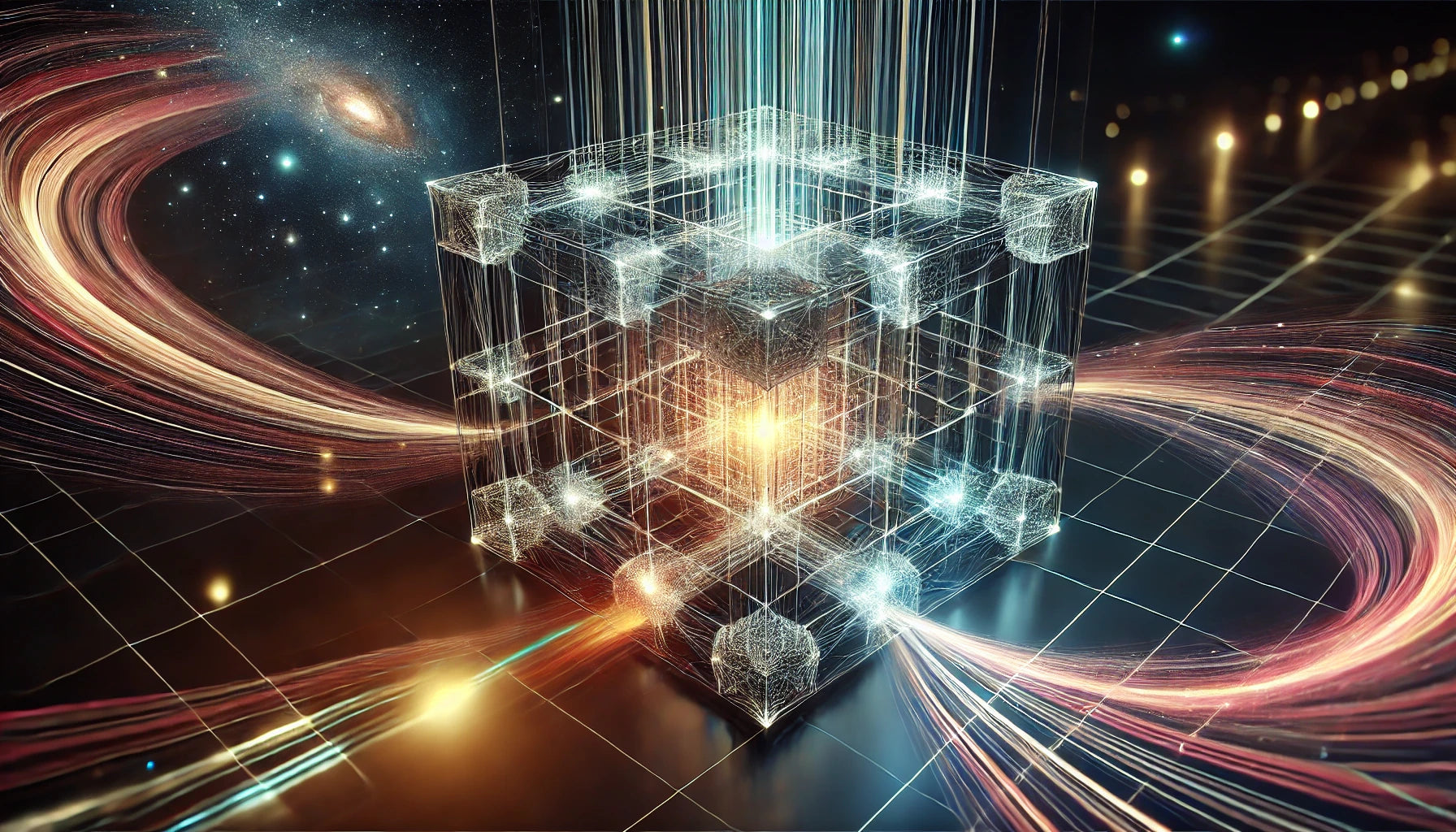
The Tesseract
The Tesseract: A Deep Dive into the Fourth Dimension
What is a Tesseract?
A tesseract, also known as a hypercube, is the four-dimensional (4D) analog of a cube. While we live in a three-dimensional world where objects have height, width, and depth, a tesseract extends into a fourth spatial dimension beyond human perception. If a cube is to a square as a tesseract is to a cube, then a tesseract is the next logical progression in geometric dimensions.
Understanding Dimensions:
-
0D (Point) – A single point, no length, width, or depth.
-
1D (Line) – A connection between two points, having only length.
-
2D (Square) – A shape with both length and width.
-
3D (Cube) – An object with height, width, and depth.
-
4D (Tesseract) – A shape that extends into the fourth spatial dimension.
Imagine taking a cube and moving it in a new direction that doesn’t exist in our world—this movement creates a tesseract. While we cannot fully visualize a tesseract, mathematical models and 3D projections allow us to understand its structure.
How Does a Tesseract Work?
A tesseract consists of eight cubes connected in a higher dimension, just as a cube consists of six square faces. When projected into 3D space, it appears as a cube within a cube, with additional edges connecting corresponding points between them.
Key Properties of a Tesseract:
-
It has 8 cubic cells (compared to a cube's 6 faces).
-
It has 16 vertices, 32 edges, and 24 square faces.
-
It can be rotated in four-dimensional space, producing distortions when viewed in 3D, much like how a cube looks distorted when projected into 2D.
What Can a Tesseract Do?
Though a tesseract is a purely mathematical concept, its implications extend to science, technology, and even theoretical physics. Here’s how it plays a role in different fields:
1. Physics and Theories of Higher Dimensions
The tesseract is often discussed in theoretical physics, particularly in relation to string theory and higher-dimensional space-time models. Some scientists propose that extra dimensions beyond our 3D world could explain the mysteries of quantum mechanics and gravity.
2. Computer Science and Data Visualization
-
Tesseracts are used in machine learning, big data processing, and high-dimensional data representation.
-
In AI and neural networks, multi-dimensional structures similar to a tesseract help model complex data relationships.
3. Science Fiction and Pop Culture
The tesseract has been a central concept in many sci-fi books and movies:
-
"Interstellar" (2014): The protagonist enters a 5D tesseract structure, allowing him to see across time.
-
"A Wrinkle in Time" (1962): Introduces the idea of "tessering"—a way to travel instantly across space using higher dimensions.
-
Marvel’s Tesseract: A fictional object storing infinite energy, inspired by the hypercube.
4. Mathematics and Cryptography
-
The tesseract provides insights into higher-dimensional geometry, useful in cryptography and security algorithms.
-
Some encryption techniques use hypercubic structures to create more secure keys.
Why is the Tesseract Important?
The tesseract represents the next step in dimensional thinking, challenging our perception of space. It provides a framework for:
-
Understanding higher dimensions in physics
-
Developing advanced data structures in computing
-
Exploring new concepts in art, philosophy, and storytelling
Final Thoughts
While we may never physically interact with a tesseract, its influence spans multiple disciplines, from theoretical physics to AI. As our understanding of the universe expands, so too does our exploration of higher dimensions—and the tesseract remains a fascinating key to unlocking the unknown.

